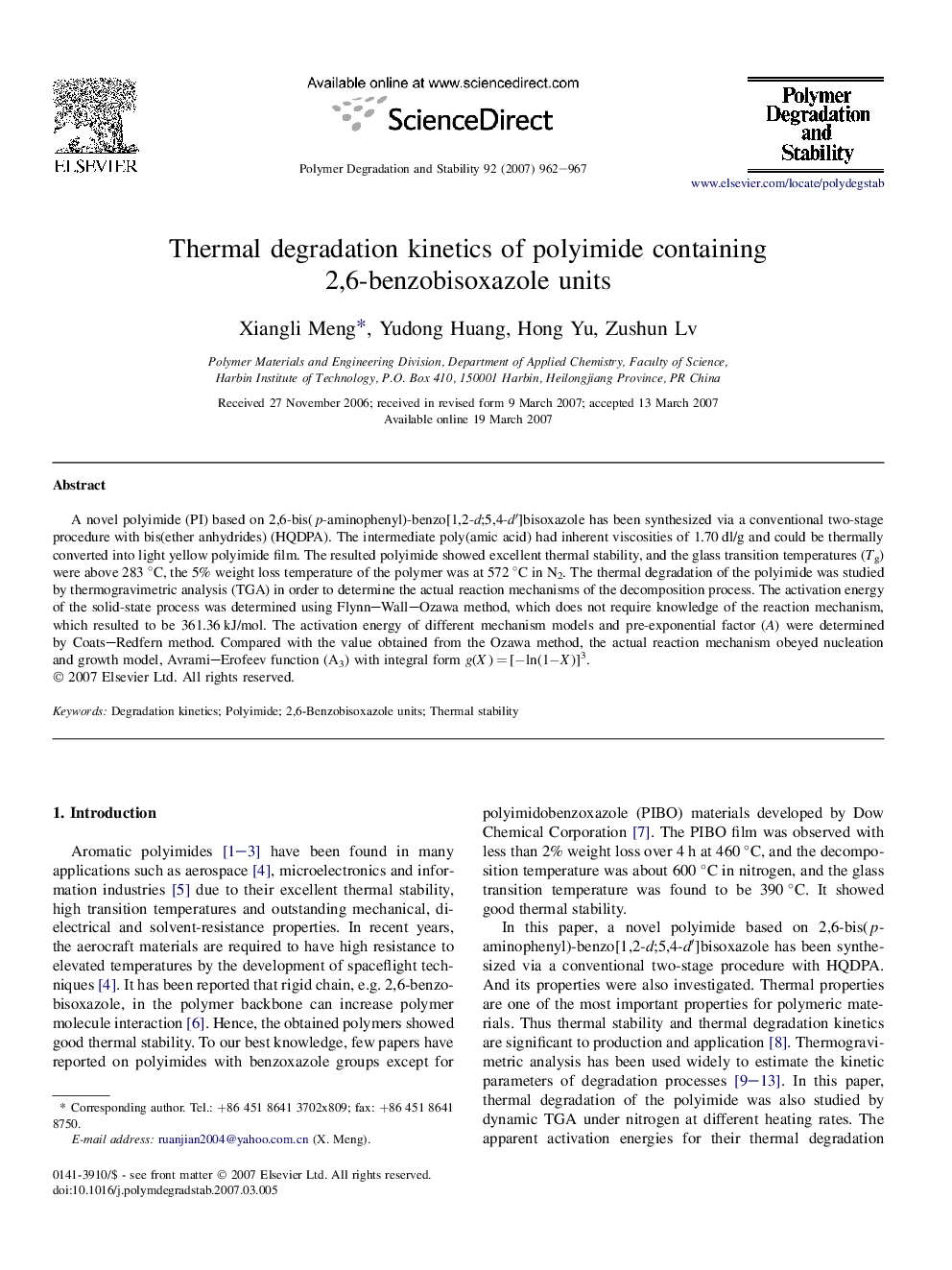| Article ID | Journal | Published Year | Pages | File Type |
|---|---|---|---|---|
| 5205086 | Polymer Degradation and Stability | 2007 | 6 Pages |
Abstract
A novel polyimide (PI) based on 2,6-bis(p-aminophenyl)-benzo[1,2-d;5,4-dâ²]bisoxazole has been synthesized via a conventional two-stage procedure with bis(ether anhydrides) (HQDPA). The intermediate poly(amic acid) had inherent viscosities of 1.70 dl/g and could be thermally converted into light yellow polyimide film. The resulted polyimide showed excellent thermal stability, and the glass transition temperatures (Tg) were above 283 °C, the 5% weight loss temperature of the polymer was at 572 °C in N2. The thermal degradation of the polyimide was studied by thermogravimetric analysis (TGA) in order to determine the actual reaction mechanisms of the decomposition process. The activation energy of the solid-state process was determined using Flynn-Wall-Ozawa method, which does not require knowledge of the reaction mechanism, which resulted to be 361.36 kJ/mol. The activation energy of different mechanism models and pre-exponential factor (A) were determined by Coats-Redfern method. Compared with the value obtained from the Ozawa method, the actual reaction mechanism obeyed nucleation and growth model, Avrami-Erofeev function (A3) with integral form g(X) = [âln(1âX)]3.
Related Topics
Physical Sciences and Engineering
Chemistry
Organic Chemistry
Authors
Xiangli Meng, Yudong Huang, Hong Yu, Zushun Lv,
